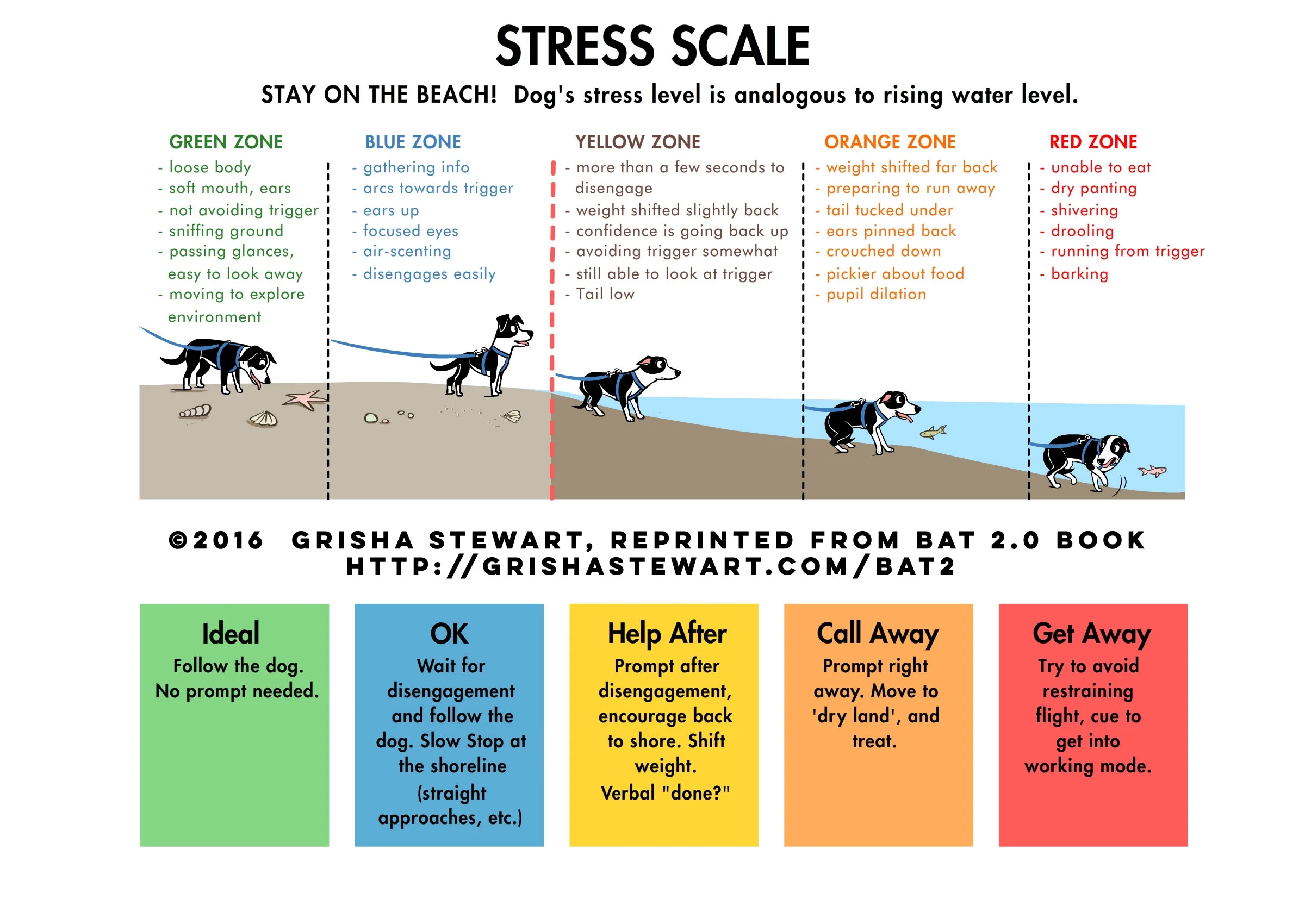Cortisol & Canines: Why Thresholds Matter
Let’s talk about something that doesn’t get enough airtime in dog training: thresholds—the moment when a dog goes from "I can handle this" to "I need to get out of here", and why it matters more than almost anything when working with fear, reactivity, or overstimulation.
In pet training, we’re always interpreting behaviour to figure out where that line is. Because once a dog goes over threshold, learning stops. Cortisol (that’s the body’s major stress hormone) kicks into gear, prepping the brain for survival—not new information. And in that space? We’re not training. We’re just surviving.
What does ‘over threshold’ look like?
Barking, lunging, growling, snapping
Shaking off, yawning, lip licking (yes, those are stress signals too)
Refusing food or toy play they’d normally love, even actively ignoring a trigger or sniffing without purpose
Hypervigilance or frantic scanning
Ears pinned, or pushed forward, tail stiff, body tense or low
Trying to flee—or freezing in place
These signs tell us: “This is too much. I’m not okay right now.” The moment you see these? The window for learning has closed. There’s a magic zone before that line. When a dog notices a trigger (a person, a dog, a sound), but can still:
Look back at you
Take food easily
Offer known behaviours (sit, focus, etc.)
Sniff, explore, or show loose, soft body language, maybe gets tense for a moment, but is able to recover and return to normal activities or behaviour.
That’s the sweet spot. That’s where desensitisation and counter-conditioning can actually work.
Desensitisation = exposing the dog to a trigger at a low enough intensity that they stay under threshold and feel neutral or indifferent.
Counter-conditioning = pairing that low-level trigger with something awesome (like cheese, play, praise) so their emotional response changes over time from negative to positive.
Your job? Find that zone—and don’t blow past it. Watch for signs that the threshold is creeping up:
Slower to take treats, or snapping treats from a handler
Staring a little harder
Body getting a little more still
Movement shifting from curious to stiff → That’s your cue: wrap the session, end on a win, and give the dog a breather.
Don’t underestimate the value of “boring” sessions! A training session where nothing happens—the dog notices the trigger and just... exists? And you’re rewarding that neutrality?
That’s progress. That’s gold!
Every calm look-away, every relaxed breath near a trigger, every “ho-hum, no big deal” moment tells the nervous system: “You’re safe. You’re okay. The world isn’t out to get you.” That’s what reshapes emotional responses from the inside out.
Train smart. Work with thresholds, not against them. Trust the process, trust your dog, and let quiet wins be loud celebrations.
Stay on the Beach”: A Visual for Threshold Work
Imagine your dog is standing on a beach, watching a storm way out at sea (that’s the trigger). From the beach, they’re safe. They can see the trigger, assess it, breathe. They’re still with you, still able to learn.
The closer they get to the edge of the cliff—aka, closer to the trigger or more intense exposure—the higher the risk that they’ll fall off into reactivity or shutdown. Once they’re off the cliff? That’s over threshold. No learning, just survival mode.
Your job in training? Keep your dog on the beach.
That means:
Distance matters (more than you think)
Intensity matters (sound, movement, scent—it's not just visual!)
Duration matters (long exposure to even a low-level trigger adds up)
Using this metaphor helps us slow down, choose easier versions of the trigger, and recogniae the real win: when your dog stays grounded, calm, and confident.
So if you're ever unsure in a training session—ask yourself: Are we still on the beach?
If not, it’s okay to zoom out, get more space, or call it a day. Progress isn’t made at the edge of the cliff—it’s made where your dog feels safe enough to think.

